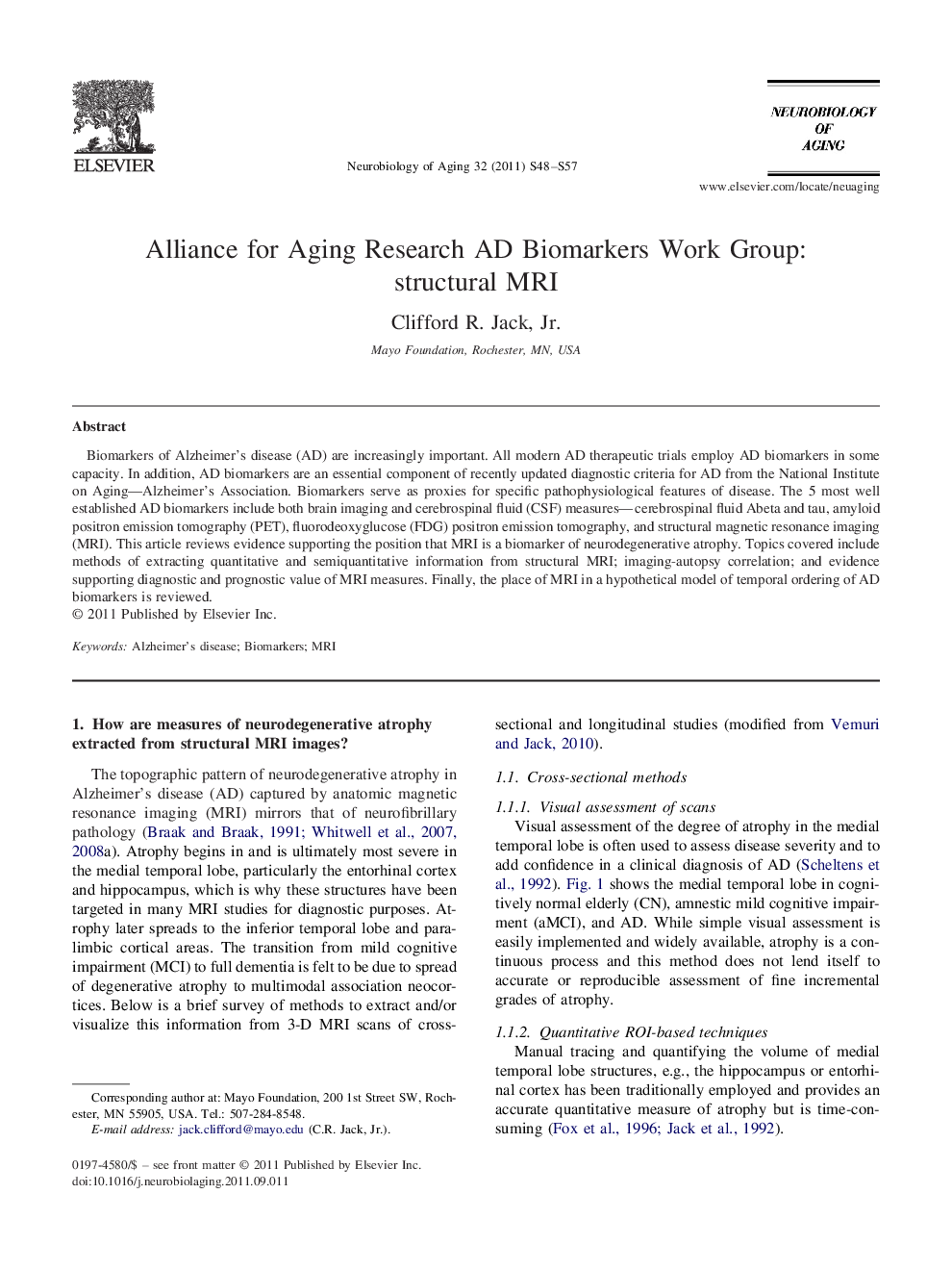| کد مقاله | کد نشریه | سال انتشار | مقاله انگلیسی | نسخه تمام متن |
|---|---|---|---|---|
| 328647 | 1433613 | 2011 | 10 صفحه PDF | دانلود رایگان |

Biomarkers of Alzheimer's disease (AD) are increasingly important. All modern AD therapeutic trials employ AD biomarkers in some capacity. In addition, AD biomarkers are an essential component of recently updated diagnostic criteria for AD from the National Institute on Aging—Alzheimer's Association. Biomarkers serve as proxies for specific pathophysiological features of disease. The 5 most well established AD biomarkers include both brain imaging and cerebrospinal fluid (CSF) measures—cerebrospinal fluid Abeta and tau, amyloid positron emission tomography (PET), fluorodeoxyglucose (FDG) positron emission tomography, and structural magnetic resonance imaging (MRI). This article reviews evidence supporting the position that MRI is a biomarker of neurodegenerative atrophy. Topics covered include methods of extracting quantitative and semiquantitative information from structural MRI; imaging-autopsy correlation; and evidence supporting diagnostic and prognostic value of MRI measures. Finally, the place of MRI in a hypothetical model of temporal ordering of AD biomarkers is reviewed.
Journal: Neurobiology of Aging - Volume 32, Supplement 1, December 2011, Pages S48–S57